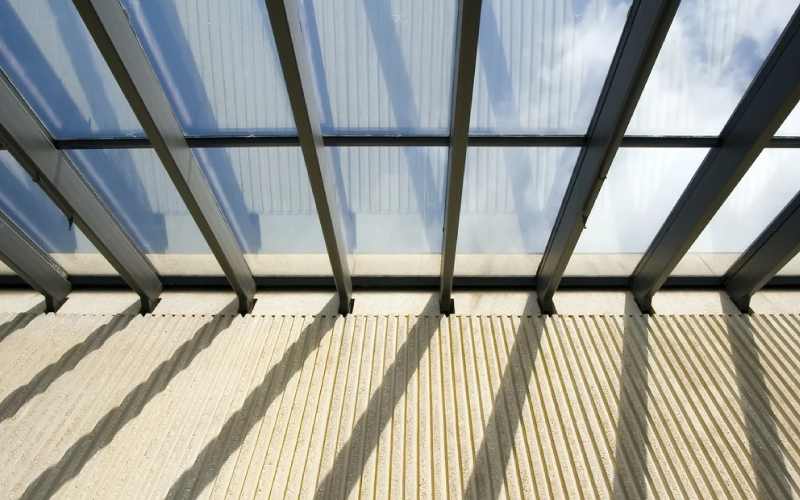Benefits of Natural Light in the Workplace
By Matt Brady

When it Comes to Office Lighting, Brighter is Always Better
No one ever said, “I love where I work because the fluorescent lighting makes me feel all warm and fuzzy inside.”
We’re not picking on fluorescent lighting—or any other artificial lighting—because they serve an important purpose. But for many reasons, natural lighting is an essential part of designing or updating any smart workplace.
And because we humans spend 80 to 90 percent of our time indoors—no more 12-hour days toiling away in the hay fields—it’s more important than ever to make sure natural light is available for everyone within an office environment.
That’s not just an opinion.
A survey by an HR advisory firm published in the Harvard Business Review shows access to natural light is the number one attribute workers want in their office environment.
However, the benefits of natural lighting go beyond the preferences of office workers. In fact, natural lighting in an office environment has scientifically proven benefits.
Here are seven of the big ones:

1. Good sleepers are better workers.
A study conducted by Northwestern Medicine and the University of Illinois concluded that workers exposed to natural light sleep longer and better (at home, and not at their desks) than those who aren’t exposed to natural light. Those working next to windows receive 176 percent more white light exposure than do their ashen counterparts. That translates to 46 minutes of extra sleep. Who couldn’t use extra sleep?
2. Workers are healthier.
An obvious extension of better sleep patterns is better overall health. According to a 2011 study at the University of Oregon, the quality of the view from a person’s desk and their exposure to natural light are interconnected with the amount of sick time they take. In the study, those who had nice views of the outside and received a decent amount of sunlight took 6.5 percent less sick leave than others.
A recent study at Cornell showed workers exposed to natural light experienced an 84 percent drop in issues such as headaches, eyestrain, and blurred vision. Because those symptoms can lead to increased fatigue, workers exposed to less natural light were more susceptible to other health issues.

3. Healthier workers are happier.
Not only are workers with exposure to natural light more likely to work a full schedule, they are happier as they go about it. The connection between natural light and Vitamin D is well-studied. Vitamin D can promote better health in many ways, such as fighting depression, diabetes, and chronic pain. Even when a worker soldiers through pain and discomfort—showing up for work when they don’t feel like it—such health issues can affect their demeanor.
4. Natural light boosts productivity (and revenue).
Pacific Gas & Electric performed a study of natural light using Walmart as a guinea pig. The utility wanted to see how natural lighting (via skylights) affected sales. PG&E studied stores that were identical—same geographic area, layout, and everything—with the only significant difference being some stores had skylights and some did not. The study concluded that sales in the skylighted stores were 40 percent higher than sales in stores with only fluorescent lighting.

5. Workers feel more engaged.
The World Green Building Council says workers feel more engaged when they work in natural light. And being engaged means they are more likely to stay focused on their tasks. Also, they are more likely to collaborate with other team members. More engagement and increased collaboration results in more productivity and success.
6. Natural light increases the value of the space.
Office space with ample natural lighting is more appealing to potential tenants. In fact, such office space is known to lease for two to four dollars per square foot more than an office space with little or no natural lighting. One study indicated natural light makes a space seem more open and inviting, which induces a prospective tenant to pay more. Not only does space with a natural light deficit lease for less, it tends to remain on the market longer than its sunny counterparts.

7. Utility costs may drop.
Artificial lighting usually sucks up about a third of electric use in a commercial building. That number can be a little higher or lower depending on various circumstances. It’s no great revelation that natural light can reduce the need—and expense—of artificial lighting. However, the right kind of design, layout, and window products are essential to reducing utility costs. That’s to prevent savings in lighting being offset by heat loss through windows or allowing too much sun in during hotter months.

Simple ways to add more natural light
Providing adequate lighting in an office space doesn’t mean every worker needs a view of a shimmering lake with swans to benefit from it. And it doesn’t mean every worker has to sit within five inches of a window. However, there are simple ways to incorporate more natural light so it benefits everyone.
- Reevaluate the location of desks and work pods. How can they better be positioned so everyone has access to natural light?
- Re-situate shelves and other large objects that may block external light sources.
- If conference tables and other communal drawing points now receive most of the natural light, perhaps they can be rearranged so that work areas—where people spend most of their time—have prime access to outdoor light.
- Consider morning vs. afternoon light and how space can be arranged to take advantage of most hours of natural light.
- Encourage employees to take outside breaks, even if only to stroll around the parking lot, to soak up the sun’s healthful benefits.
An office can have all the “Make Your Own Smoothies” and “Bring Your Marmot to Work” days it can squeeze onto the calendar. But if your workplace doesn’t make ample use of free, unlimited natural light (until the sun burns out in 5 billion years), it can’t be the type of environment that helps workers feel good and productive.


